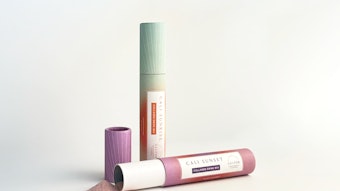- Hair care has increasingly become performance driven, borrowing the focus on efficacy from skin care.
- The increasing sophistication in hair care has led to a gradual premiumization, although mass products still account for nearly 90% of the global hair care market.
- Conditioners recorded the highest value growth in hair care 2008–2013 thanks to hair treatments, and primarily hair oil formatted as leave-in conditioners. However, shampoos contributed the most to the value growth.
- The impact of emerging markets has been so significant that they contributed nearly 90% to overall hair care value growth in 2013.
- Developed markets are strategic in that sales in these regions account for 50% of global hair care value sales. The higher per capita spending in Western markets means brands stand to gain from a higher pricing margin.
In line with the performance of the beauty industry in general, hair care has experienced a slight slowdown globally, with the value growth rate falling from 5.5% in 2012 to 4.9% in 2013. However, hair care has been able to resist the downward pressures on growth rates more strongly than some other beauty categories. For example, skin care, which has been growing at a relentless pace in the last five years, has submitted to the weight of the market challenges more strongly than hair care, with its value growth rate waning from 5.5% in 2012 to 4.7% in 2013. Hair care has been benefiting from a surge of innovations, seeing it evolve from a staple category with basic cleaning functions to one that includes more sophisticated products that offer more targeted solutions—thus providing it with the necessary boost evident across all hair care categories.
All Hair Care Categories Receive a Boost
At nearly 40%, conditioners recorded the highest value growth in hair care between 2008 and 2013 thanks to the introduction of hair treatments, primarily hair oils formatted as leave-in conditioners The broad purpose of hair oils includes adding shine and nourishment to hair while taming frizz, helping users to wear hair in its natural form. The popularity of hair oils also appears to have impacted sales of styling agents, which recorded one of the lowest value growth rates—5%—in hair care during the same period, as consumers seemed to show a preference for the natural look and feel of hair oil rather than the stiff hold of traditional styling agents. Oil also is used in colorants; for example, Garnier’s Olia uses 60% oil to help pigments penetrate the hair, rendering redundant the need for ammonia, which is believed to have a harsher impact on hair. Thanks to these innovations, hair colorants were the second-fastest growing category within hair care between 2008 and 2013, rising higher than 30% in value terms.
In absolute terms, however, shampoos contributed the most to the value growth of hair care, benefiting from innovations and, more importantly, increasing penetration in emerging markets. A key impetus to the growth in shampoos has been aspiring consumers in emerging markets upgrading to more premium Western brands, thanks to rising disposable incomes as well as the increasing penetration of shampoos in rural India, where soap is predominantly used in consumers’ hair care routines. The impact of emerging markets has been so significant they contributed nearly 90% to overall hair care value growth in 2013.
Brazil: Key Focal Point for Growth
Within the context of prospective emerging markets driving growth, Brazil is a special case. With a 20% contribution to global hair care retail value growth in 2013, Brazil not only accounted for the most growth, but also, going forward, it is projected to surpass the U.S. as the largest hair care market, in nominal terms, by 2017. Growth in Brazil is projected to come from all hair care categories, but conditioners are expected to lead absolute growth. Brazilian women have a strong preference for straight hair and spend considerable amounts on conditioners to moisturize and hydrate their hair. In fact, Brazil is the world’s largest market for conditioners, both in terms of value size and per capita spending.
Unsurprisingly, on account of the strong growth prospects, Brazil is a key focal point for the leading global hair care players (including Unilever, L’Oréal and Procter & Gamble), but the multinationals are currently facing competitive challenges from local players. Phitoteraphia Biofitogenia Laboratorial and Niely do Brasil Industrial were the leading companies in terms of market share gains in 2013, while Unilever and L’Oréal marginally lost shares and Procter & Gamble’s share remained static. The local players benefited from a strong boost in perms and relaxants but are also developing product sophistication across all hair care categories. Furthermore, the more competitive price positioning of indigenous brands in times of increasing macroeconomic challenge, including rising inflation, has provided local players with the necessary competitive edge in the Brazilian market.
Although local players have a long way to go before catching up with multinational players in terms of value sales, they are a threat that cannot be overlooked. Multinationals could address competitive challenges in the market by introducing more advanced and sophisticated products from their mature market portfolios. Of particular interest are keratin shampoos and conditioners, which claim to straighten hair and would be more expensive than regular products found in Brazilian hair care—and Brazilians are ready for them. This is illustrated by the fact that Brazil ranks among the top 10 markets in terms of per capita spending on hair care. Procter & Gamble recently launched Pantene Age Defy there, which has proved to be very successful in the market.
Three Es Dominate Innovations in Developed Markets
While brand owners need to focus on Brazil and other emerging markets to drive growth, they also need to keep their focus on developed markets. Developed markets are strategic in that sales in these regions account for 50% of global hair care value sales. Moreover, per capita spending in developed markets is much higher than developing markets, with the exception of Brazil. For example, in Norway, per capita spending on hair care is almost 50 times higher than per capita spending in India, despite India’s robust growth prospects in hair care. The higher per capita spending in Western markets means brand owners stand to gain from a higher pricing margin. The challenge, however, is Western markets have reached a high level of maturity, and growth can only be induced by means of breakthrough innovations.
Innovations in hair care have revolved around three key Es—efficiency, experience and expense, concepts that have been inspired by other beauty categories. Hair care has increasingly become more performance driven, borrowing the focus on efficacy from skin care. For example, L’Oréal launched Elvive Fibrology, a hair care line for thinning, mature hair reported to use active molecules that penetrate deep within hair strands to increase the diameter from within. The range includes a shampoo, conditioner and serum, resembling skin care in terms of efficacy claims and ingredients, as well as the multistep routine involved.
Some hair care launches also have aimed to emulate the experience of color cosmetics by making the products exciting. For example, hair chalks, a form of hair colorants, have been introduced in retail channels. Hair chalks can be easily washed off, which means they can be used at a greater frequency to match nail polish, lipstick and accessories. Adding to the experience element of hair care launches, some fragrance brands have launched hair fragrances to evoke a sensorial experience, although these are still at an incipient stage.
The increasing sophistication in hair care has led to a gradual premiumization, as seen within oral care. Between 2008 and 2013, value growth in hair care exceeded volume growth by an increasing margin. Despite the premiumization, hair care is predominantly characterized by mass market products, with mass hair care accounting for nearly 90% of the global hair care market. This is because hair care, akin to oral care, is still viewed as a staple category, and consumers still carefully evaluate the expenses involved when making hair care purchases, regardless of the level of product sophistication.
More Segmentation for Future Innovations
An important question going forward is what other levels of sophistication is hair care likely to witness. While it has been successful in targeting hair care needs more closely, there are still some untapped areas. For example, gray hair remains largely unexplored, and even though there have been launches to address hair loss, it is still not a fully proliferated market.
Going forward, innovations are expected to be driven by increasing segmentation and targeting less explored hair care concerns. For innovations targeting the issue of hair health, consumers will continue to pay attention to the prices charged, but if there are breakthrough innovations that can impede the process of gray hair or hair loss, it is likely that consumers would take a different view toward pricing.
Oru Mohiuddin is a senior analyst, beauty and personal care, at Euromonitor International. Contact her at [email protected].










